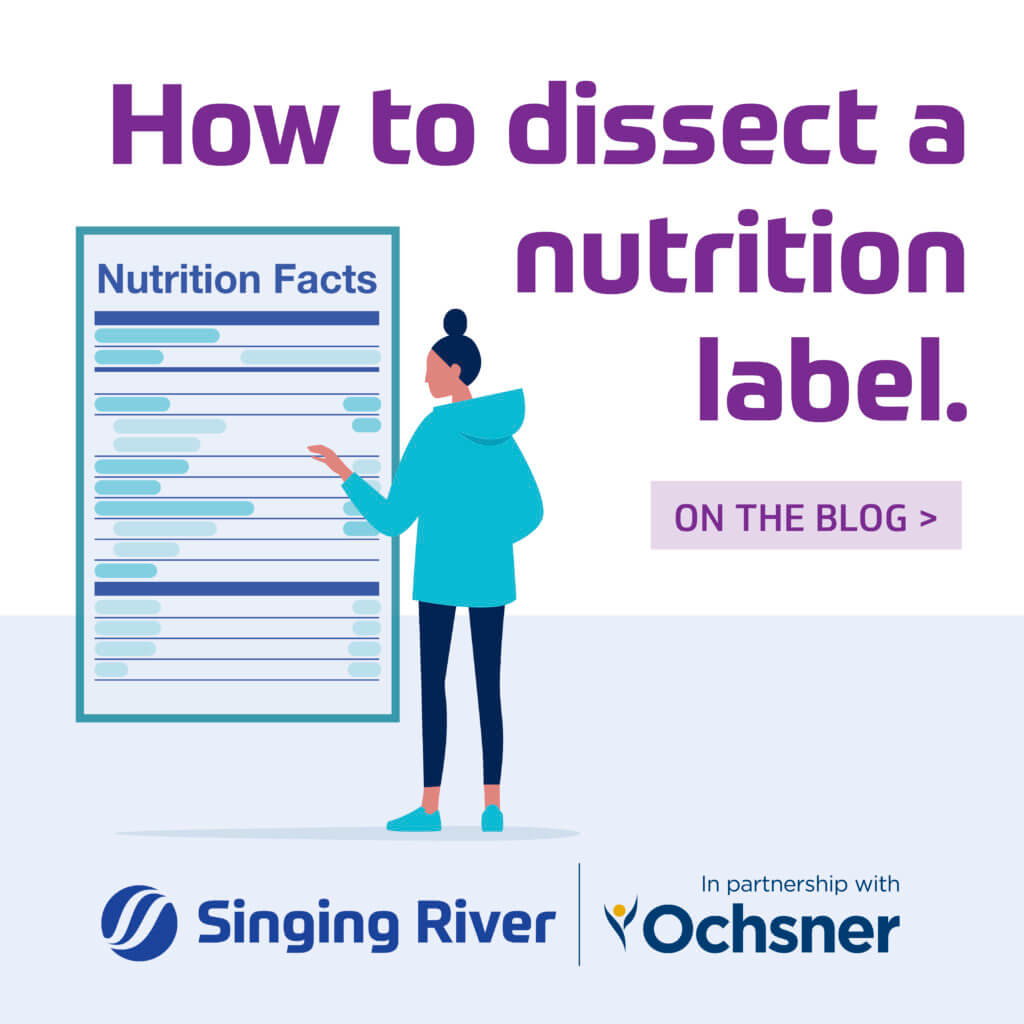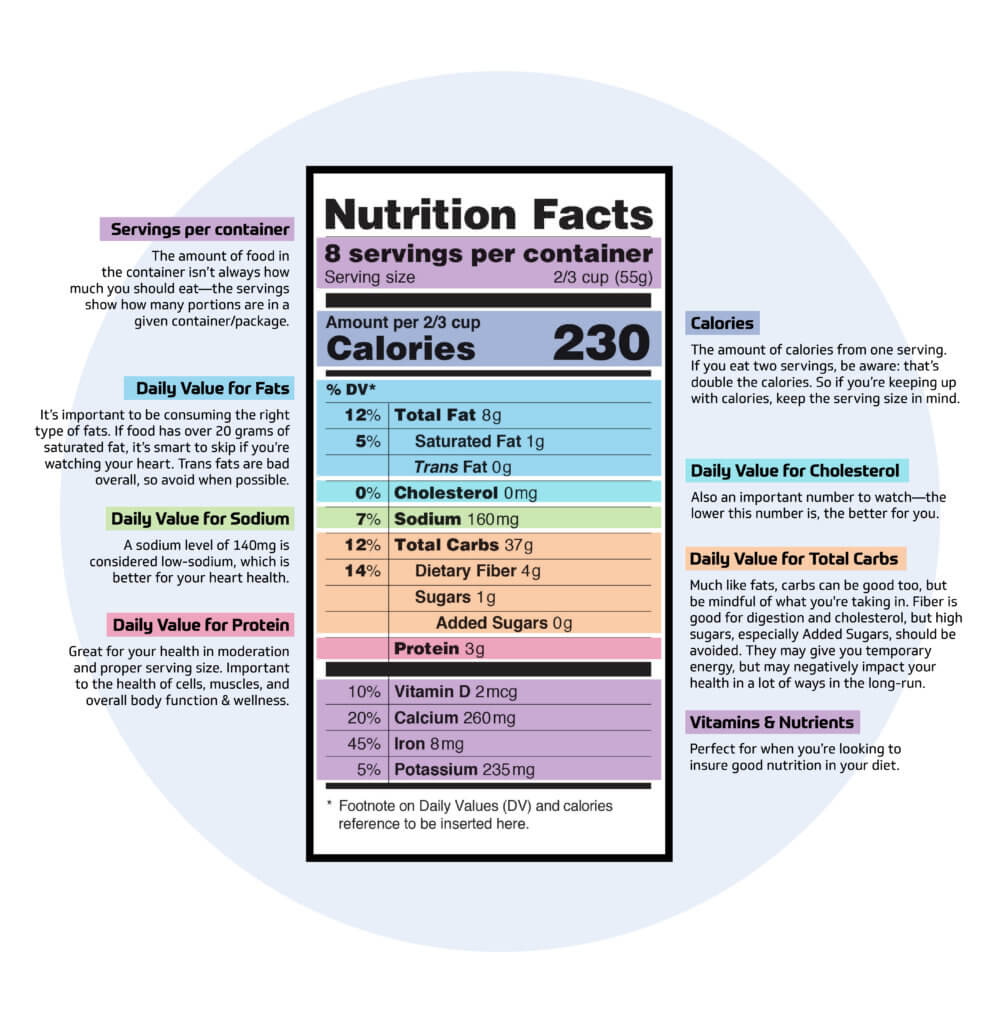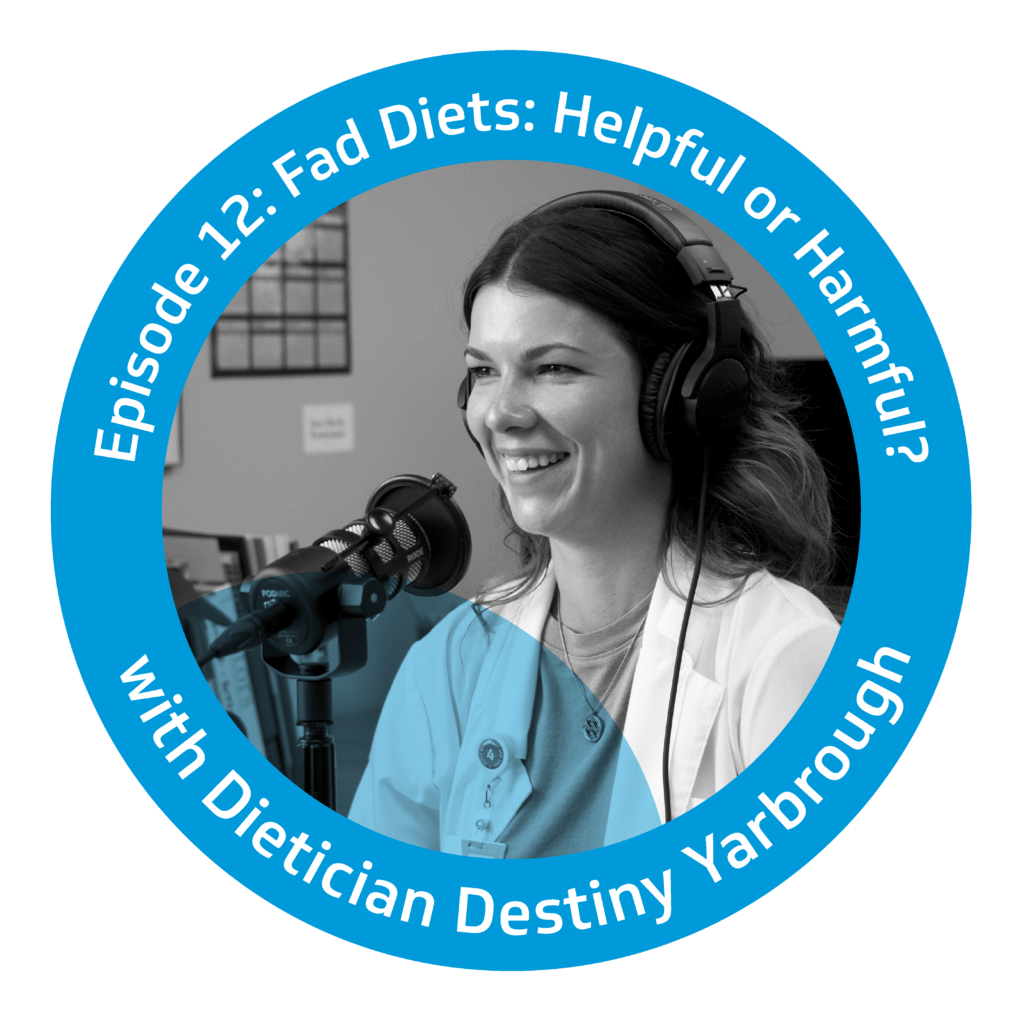How to dissect a nutrition label.

We all have those moments. Imagine that it’s Friday evening, and it’s been an incredibly long week. You’re able to finally sit down, watch the show you’ve been meaning to get to, and enjoy just a *few* Cheez-its. Three hours later, you’ve completed the show…and the box of Cheez-its. When looking at the side of the box, you first feel relief when you see it’s only 150 calories, until the horror sets in—each box has 7 servings.
There’s never shame in indulgence on occasion, but understanding a nutrition label before eating can help you understand portions, what’s bad for you, and how to enjoy your snacks with a little less guess-work.
“Diet is what you want to take in. Honestly, I don’t think that anybody should have to cut anything out of their diet, which is just what you eat on a day to day basis. I think everything in moderation—I mean moderation seriously. I eat pizza, I eat tacos, I eat donuts. But you have to do good 80-85% of the time.”
Destiny Yarbrough, MS, LD, Dietician
In 2018, the FDA updated what all nutrition labels have to include. The new labels encourage better understanding of serving sizes, provide more accurate daily values percentages, and more—all in an effort to help the average Joe get a better idea of how to portion and make better, more informed, food choices.
As you look at a nutrition label, look beyond the calories to understand your food and how it may impact your health.

When focusing on losing weight, look for:
- Low fat foods with 3g or less of total fat. Of that, saturated fat should be 1g or less
- Low cholesterol foods with 20mg or less
- Low sodium foods with 140mg or less
- High fiber foods with 3g or more
- Cereal with less than 9g of sugar
Your daily goal should be to eat:
- < 60 grams of fat
- < 20 grams of saturated fat
- < 300 milligrams of cholesterol < 2,400 milligrams of sodium
- < 45 grams added sugar
- > 25 grams of fiber
“Portion control is one of the biggest aspects. For a little bit of a visualization, your fist, if you ball it up, is actually a cup.
That’s all you need of carbs. That’s potatoes, that’s rice, that’s chips, that’s pasta. That’s whatever your heart desires as far as carbs. That’s it. That’s all you really need in one sitting.
And if you open up your hand, the palm of your hand is the size of protein that you need at each one of your meals.
You’re going to feel so much more full from all these fruits and vegetables that take up 50% of your plate anyways, that you’re not going to rely so much on the other items.”
Destiny Yarbrough, MS, LD, Dietician
While getting into the routine of reading labels and reducing sugar and sodium feels daunting, over time it becomes a natural practice that allows guilt-free enjoyment of food, so when you do cave on that box of Cheez-its, you can enjoy every moment.
Looking to start a conversation about healthy eating and/or weight loss? Contact our weight loss team today to learn more about non-surgical and surgical options available.
Content inspired by Healthcare is Selfcare: The Podcast
Hear more from Destiny Yarbrough on Episode 12:

What do some of the latest fad diets really do to your system? And what should you have in your diet every day? Dietitian Destiny Yarbrough helps separate fads from facts on this episode of Healthcare is Selfcare: The Podcast.